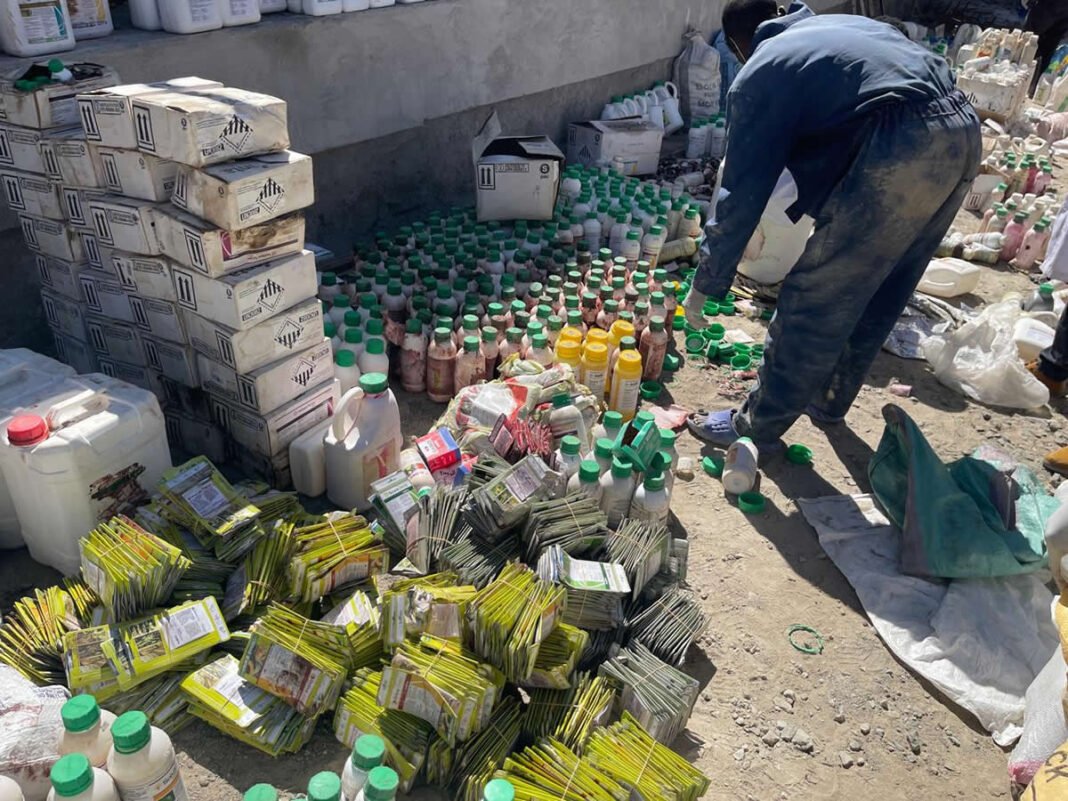Kenya’s agricultural sector plays a vital role in the country’s economy, employing over 70% of the rural population and contributing significantly to food production and exports.
Yet, a quiet crisis threatens the core of this vital industry—counterfeit pesticides. While these products are appealing due to their low cost, they bring with them a series of dire consequences for health, the environment, and economic sustainability.
This article explores the deeper implications of the counterfeit pesticide crisis and how Kenya can address it with urgency.
What Fuels Kenya’s Counterfeit Pesticide Market
Economic Pressures and Tax Burden
In 2024, the Kenyan government introduced a 16% Value Added Tax (VAT) on pesticides, increasing the retail prices of genuine products. As a result, many smallholder farmers—who form the bulk of Kenya’s food producers—turned to cheaper alternatives available in informal markets.
These low-cost products, often counterfeit or adulterated, mimic reputable brands but lack efficacy or safety.
Patrick Amuyunzu, Chairman of the Agrochemical Association of Kenya (AAK), noted that the industry is struggling with the influx of fake products, saying,
“Over 15 to 20 percent of agrochemicals being distributed in Kenya today are fake. These are produced by unscrupulous dealers and sold under the guise of legitimate brands.”
The situation has escalated to a point where losses from counterfeit agrochemicals are estimated at over USD 50 million annually.
Weak Enforcement and Smuggling Networks
Kenya’s porous borders and weak market surveillance systems allow illegal and unregistered pesticides to flow into the country with relative ease. These products, often smuggled from neighboring nations, find their way into agro-vet shops and open-air markets.
Fredrick Otieno, Chemicals Risk Manager at the Centre for Environmental Justice and Development (CEJAD), stated:
“We need to strengthen market surveillance to ensure illegal pesticides are identified, and the dealers prosecuted. The current system allows banned substances to reappear under new packaging.”
Even major entry points such as the Port of Mombasa have seen surges in the import of mislabeled or counterfeit pesticides, raising alarms among regulators and advocacy groups.
Consequences: From Farmer Livelihoods to National Food Security
Reduced Yields and Farmer Losses
Counterfeit pesticides are often diluted or entirely inert. As a result, they fail to control pests effectively, leading to massive crop losses. The consequence for farmers is not just reduced income but also long-term soil degradation due to chemical imbalances.
Farmers using counterfeit products have reported entire crops failing despite repeated applications. Without proper pest control, infestations spread quickly, forcing farmers to increase usage and costs with little to no gain.
Human Health Hazards
Farmers and consumers alike face serious health risks due to exposure to toxic or unregulated substances in counterfeit pesticides. Reports from Kirinyaga, Murang’a, and Meru counties have linked improper pesticide use to respiratory issues, vomiting, and even long-term conditions such as cancer.
Mary Wambui, a farmer in Central Kenya, shared her experience:
“Some sprays sting the nose so badly you can’t breathe properly. We used one on tomatoes, and buyers later told us they experienced stomach problems.”
Additionally, due to lack of proper labeling, withdrawal periods—the time required between pesticide application and harvesting—are often ignored, leading to high chemical residue levels in the food chain.
Environmental Impact
Many counterfeit pesticides contain banned active ingredients such as carbofuran and mancozeb—chemicals prohibited in the EU due to their high toxicity.
These substances not only contaminate soil and water systems but also threaten biodiversity by killing bees, birds, and even predators such as lions.
In parts of Laikipia, carbofuran has been misused to poison wildlife, causing ecological imbalance and raising concerns among conservation groups.
Tackling the Crisis: From Regulation to Awareness
Regulatory Enforcement and Market Surveillance
The Anti-Counterfeit Authority (ACA), in collaboration with the Pest Control Products Board (PCPB), has intensified crackdowns on fake agrochemicals. In early 2025, ACA officers seized counterfeit pesticides worth KES 3.4 million in Kitengela. ACA Director Osman Yusuf emphasized the danger:
“These products not only risk food safety but also threaten the entire agricultural economy. Farmers must source inputs from certified dealers.”
PCPB has started encouraging the use of digital tracking tools, such as QR codes and unique verification labels, to help buyers authenticate pesticide products.
Policy Reforms and Legal Accountability
Experts argue for stronger legal frameworks to address the loopholes that counterfeiters exploit. Fredrick Otieno of CEJAD advocates for the periodic review of registered products:
“The law should require scheduled reviews of pest control products, de-registering those proven to be hazardous or unnecessary.”
Banning imports of Highly Hazardous Pesticides (HHPs) and investing in local production of bio-based alternatives can also help reduce reliance on chemical pesticides.
Empowering Farmers with Knowledge and Alternatives
Several non-governmental organizations, including the Aga Khan Foundation, have introduced programs promoting Integrated Pest Management (IPM) and organic farming methods. These offer sustainable alternatives to chemical pesticides and reduce the long-term costs of pest control.
Quentin Rukingama, a horticulture exporter, summed it up well:
“There’s a big difference between what’s grown for export and for local markets. For exports, you can’t risk non-compliance. But the local market has turned into the Wild West.”
Improving farmer education, training agro-dealers, and subsidizing safer pesticides could go a long way in restoring confidence in Kenya’s agricultural inputs.
Outlook
Kenya’s counterfeit pesticide crisis is not merely about low prices—it’s about the high cost to lives, livelihoods, and the environment.
Farmers who unknowingly purchase fake products suffer crop failures, expose themselves to health risks, and contribute to environmental degradation. The country risks compromising its food security, export potential, and agricultural sustainability.
Solving this crisis requires a unified approach: stricter enforcement, smarter policies, enhanced farmer education, and a pivot toward safer pest control solutions.
Only by addressing the root causes can Kenya protect its farmers, its ecosystems, and the health of millions who rely on agriculture every day.
Also Read
Top 5 machinery solutions for effective pest management
Late blight resistant potato varieties unveiled
